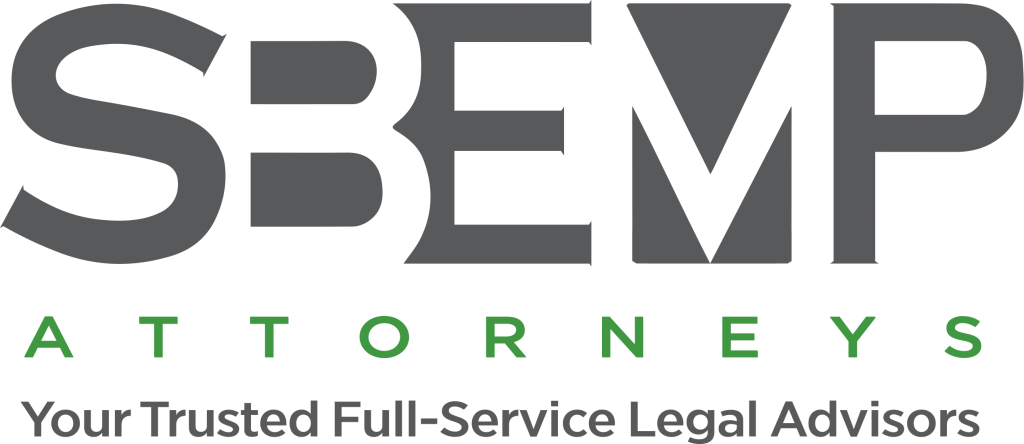 Workplace harassment is a serious issue that can have devastating effects on employees. It can lead to emotional distress, decreased productivity, and even physical health problems. In recent years, there has been a growing focus on holding employers accountable for workplace harassment. But can employers be held personally liable for harassment? In this blog post, we will explore the legal framework surrounding employer liability, when employers can be held personally liable, and how to protect employees and reduce employer liability. Attorneys at SBEMP (Slovak, Baron, Empey, Murphy & Pinkney) law firm provides professional legal advice and services to clients in Palm Springs, Palm Desert, Rancho Mirage, Inland Empire, Orange County, Coachella Valley, and surrounding communities.
Workplace harassment is a serious issue that can have devastating effects on employees. It can lead to emotional distress, decreased productivity, and even physical health problems. In recent years, there has been a growing focus on holding employers accountable for workplace harassment. But can employers be held personally liable for harassment? In this blog post, we will explore the legal framework surrounding employer liability, when employers can be held personally liable, and how to protect employees and reduce employer liability. Attorneys at SBEMP (Slovak, Baron, Empey, Murphy & Pinkney) law firm provides professional legal advice and services to clients in Palm Springs, Palm Desert, Rancho Mirage, Inland Empire, Orange County, Coachella Valley, and surrounding communities.
Understanding Workplace Harassment
At its core, workplace harassment involves any unwelcome behavior that is based on race, gender, religion, age, disability, sexual orientation, or any other legally protected characteristic, leading to a work environment that feels hostile or intimidating to those who are targeted. Such behavior might manifest in various forms, including but not limited to derogatory comments, sexual advances, threatening gestures, or the dissemination of offensive materials within the workplace. It’s critical to recognize that harassment can transpire in interactions between any individuals in the work setting—whether they are peers, supervisors and their subordinates, or even external parties like clients or suppliers.
An essential component for employers is the establishment and enforcement of robust policies that clearly delineate the boundaries of acceptable conduct within their organizations. These policies not only serve to communicate the zero-tolerance stance on harassment but also furnish employees with a clear protocol for reporting incidents should they occur. It is paramount that these reports are met with immediate and impartial investigation procedures to ensure a fair resolution.
Moreover, it’s important to underscore that harassment does not solely comprise overtly aggressive actions or remarks. Subtle behaviors, such as exclusion from meetings or the persistent undermining of someone’s work, can equally contribute to a hostile work environment, even if these actions might not initially be recognized as harassment. Therefore, fostering an organizational culture that promotes respect, diversity, and inclusion is key to preemptively addressing the roots of harassment.
By understanding the multifaceted nature of workplace harassment and implementing stringent policies to combat it, employers can significantly mitigate the occurrence of such behaviors, thereby safeguarding their employees and cultivating a healthier, more productive work environment.
Legal Framework Surrounding Employer Liability
The legal landscape governing employer liability for workplace harassment is anchored by Title VII of the Civil Rights Act of 1964. This pivotal legislation lays the groundwork for holding employers accountable when harassment occurs within their domain. Specifically, it sets the precedent that employers may face vicarious liability for acts of harassment perpetrated by their employees, especially when these actions fall within the employee’s scope of employment. This concept extends to situations where an employer or managerial staff fail to act upon harassment incidents that they were aware of or reasonably should have been aware of, thus necessitating prompt and appropriate remedial measures.
Beyond the federal purview, various state laws augment the legal framework by potentially imposing additional responsibilities and liabilities on employers. These state-specific regulations can sometimes offer broader protections against harassment, covering more grounds or offering clearer directives on employer responsibilities.
Crucially, the legal framework does not only hinge on the presence of harassment but also on the employer’s response to such incidents. The distinction between direct and vicarious liability becomes particularly relevant here. Employers directly shoulder liability when their lack of action or inadequate response to harassment complaints contributes to a persistently hostile work environment. This is juxtaposed with vicarious liability, where an employer might be held responsible for harassment by an employee, even if unaware of the actions, based on the principle that employers should maintain a harassment-free workplace.
Understanding the nuances of these legal responsibilities is paramount for employers. It underscores the importance of not only implementing rigorous anti-harassment policies but also ensuring these policies are actively enforced, with a transparent mechanism for handling complaints. In essence, the legal framework endeavors to foster a work environment where respect and dignity prevail, by holding employers to a high standard of accountability for the prevention and rectification of harassment within their organizations.
When Can Employers Be Held Personally Liable?
In the landscape of workplace harassment, the question of personal liability for employers is nuanced and contingent upon specific circumstances. Generally, liability is attributed to the organization; however, there are distinct instances where employers themselves can become personally liable. This delineation hinges on their involvement in, or response to, the harassment scenarios.
Personal liability for employers may be triggered if they are directly involved in the harassment. This includes participating in, endorsing, or initiating the unwelcome conduct themselves. Such direct involvement clearly places them in the line of legal accountability, as they are the primary actors in the harassment.
Moreover, an employer may face personal liability if they were aware of the harassment occurring within their organization but failed to take appropriate or timely corrective action. This negligence signifies a dereliction of their duty to maintain a safe and respectful work environment. The expectation is that employers will act promptly upon receiving a harassment complaint, initiating an investigation, and implementing corrective measures where necessary. A failure to do so reflects poorly on their commitment to employee welfare and opens the door to personal liability.
Another scenario where personal liability can arise is when the harassment is pervasive and severe enough to contribute to a hostile work environment. If it can be demonstrated that an employer’s inaction or inadequate response allowed such an environment to persist, they may be held personally accountable. This is particularly true if the employer had the authority to prevent or halt the harassment but chose not to act.
It is crucial for employers to understand that their actions and responses to harassment allegations carry significant weight. Not only do these actions reflect the organizational culture, but they also have direct implications for their personal legal responsibility. Being proactive in addressing and preventing workplace harassment is not just a matter of policy—it’s a personal obligation to ensure a safe and respectful work environment for all employees.
Protecting Employees and Reducing Employer Liability
To fortify the protection of employees and diminish employer liability in matters of workplace harassment, it is imperative that employers implement comprehensive anti-harassment policies. These policies must not only delineate behaviors that are deemed unacceptable but should also elucidate a detailed process for lodging complaints. Ensuring that there are multiple, accessible channels through which employees can report incidents of harassment is crucial for fostering an environment where individuals feel empowered to speak up.
Equally important is the establishment of a transparent and efficient mechanism for investigating complaints. This involves setting up a dedicated team or individual responsible for overseeing the investigation process, ensuring that it is conducted with impartiality and respect for all parties involved. Employers must take care to protect the confidentiality of the individuals involved to the extent possible, acknowledging and respecting their privacy throughout the process.
Regular training sessions should be conducted for all employees, including management and supervisory staff, on recognizing, preventing, and appropriately responding to instances of workplace harassment. These training sessions should be designed to educate employees on the nuances of what constitutes harassment and the serious impact it can have on individuals and the workplace culture as a whole.
By actively engaging in these proactive measures, employers can significantly reduce the incidence of workplace harassment, thereby not only safeguarding their employees but also mitigating their own risk of facing liability. Creating a workplace atmosphere that prioritizes respect, inclusion, and safety is essential in these efforts, contributing to a more positive and productive work environment for everyone.
Navigating the Complexities of Workplace Harassment Claims
Addressing workplace harassment claims is a nuanced process that requires a careful and thoughtful approach from employers. It’s essential to approach each claim with a seriousness that reflects an organization’s commitment to a safe and respectful work environment. Employers must ensure a meticulous investigation process, characterized by confidentiality and impartiality, to uncover the facts surrounding each allegation.
An effective investigation begins with a comprehensive interview process, involving the individual who lodged the complaint, the person or people accused of harassment, and any potential witnesses. This step is crucial in gathering diverse perspectives and understanding the context of the reported incidents. Employers need to create and maintain detailed documentation of all investigations, including interviews, findings, and any disciplinary actions taken. This documentation can be vital in demonstrating the employer’s proactive and responsive measures in addressing harassment, potentially mitigating legal risks.
Following the conclusion of an investigation, it is imperative for employers to communicate their findings and any consequent actions to both the complainant and the accused. This transparency helps to affirm the organization’s dedication to addressing such issues earnestly.
Additionally, employers should institute follow-up mechanisms to check in with the complainant after the resolution of a claim. This step not only ensures that the harassment has ceased but also reinforces the organization’s ongoing support for the affected employee. Through a meticulous, fair, and transparent approach to handling workplace harassment claims, employers can foster a culture of trust and safety, thereby minimizing their exposure to liability while protecting their most valuable asset—their employees.
Have any legal questions? Contact the Attorneys at SBEMP Law Firm:
For more information or to request a consultation please contact the law offices of SBEMP (Slovak, Baron, Empey, Murphy & Pinkney) by clicking here.
SBEMP LLP is a full service law firm with attorney offices in Palm Springs (Palm Desert, Inland Empire, Rancho Mirage, Indian Wells), CA; Indian Wells, CA; Costa Mesa (Orange County), CA; San Diego, CA; New Jersey, NJ; and New York, NY.
DISCLAIMER: This blog post does not constitute legal advice, and no attorney-client relationship is formed by reading it. This blog post may be considered ATTORNEY ADVERTISING in some states. Prior results do not guarantee a similar outcome. Additional facts or future developments may affect subjects contained within this blog post. Before acting or relying upon any information within this newsletter, seek the advice of an attorney.
